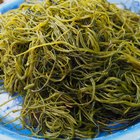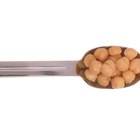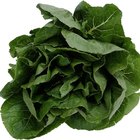
There's more to milk than the skim, 1 percent, 2 percent and whole options you typically find in the dairy case. Some types of milk are concentrated, meaning they are cooked enough that at least part of the liquid in the milk evaporates. The benefit of concentrated milks such as evaporated or condensed milk and milk powder is a longer shelf life and lower price. You can use concentrated milks in cooking and baking, substituting one for another in some cases.
What is Evaporated Milk?
Evaporated milk, or condensed milk, is heated in a partial vacuum until it loses between 50 and 60 percent of its liquid. It is considerably thicker and creamier than regular milk. Producers of evaporated milk sterilize and can it after the evaporation process. You can store a can of evaporated milk in the pantry for several months. Evaporated milk has slightly sweeter taste than regular milk, as the lactose and protein begin to brown when the milk is heated. Don't confuse regular evaporated or condensed milk with sweetened condensed milk, though. A considerable amount of sugar is added to sweetened condensed milk after the evaporation process.
What is Milk Powder?
To make dry milk or milk powder, producers remove all of the liquid from regular milk. Regular milk is heated under pressure at a high temperature, until 90 percent of the liquid evaporates. The rest of the liquid is removed by spraying the mostly dried milk into a hot chamber, which causes the remaining liquid to evaporate. Kept at 50 degrees Fahrenheit, dry milk powder will keep for up to 48 months. Keeping the powder in a dark, dry place and limiting exposure to oxygen will also prolong its life. Typically, dry milk is fat-free, as the fat goes bad more quickly and can make it difficult to reconstitute the milk.
Uses for Each
In a pinch, you can enjoy evaporated milk or dry milk as you would a glass of regular milk. To make a cup of milk using regular dry milk, combine 1 cup of water with 3 tablespoons milk powder. If using evaporated milk, mix together 4 ounces of evaporated milk with 4 ounces of water to get a cup of regular milk. Some recipes also call for evaporated milk or dry milk powder as an ingredient. For example, pumpkin pie recipes and certain casseroles use evaporated milk for creaminess. Dried milk powder is a common ingredient in bread recipes.
Substitutions
Just as you can substitute evaporated or dry milk for regular milk, you can also substitute dry milk for evaporated milk in a recipe. Use 40 percent of the water you would use to make regular milk, though. For example, if the recipe calls for 1/2 cup of evaporated milk, use 3 tablepoons of dry milk and about 3 ounces of water as a substitute. If the recipe calls for full-fat evaporated milk and you use low-fat or non-fat milk powder, there might be a slight difference in the flavor or texture of the finished recipe.
Related Articles

How to Substitute Dry Milk for ...

How to Add Oil to Dry Powdered Milk to ...

How to Make Milk Powder Non-Instant

How Much Powdered Milk Makes 1 Cup?

Can I Use Regular Milk Instead of ...
Differences Between Instant & ...

Skim Milk Powder Nutritional Information

How to Make Easy Homemade Hot Cocoa Mix ...

How to Substitute With Dry Milk

How to Store Powdered Milk for ...

How to Dissolve Non-Instant Milk Powder

The Calcium Content of Spirulina

How to Cook Dry Garbanzos in a Crock Pot

How to Make Homemade Liquid Rouge

What Is Dye Made From?

How to Substitute Dried for Fresh Dill ...

Calories in Peppermint Extract

Substitutes for Instant Espresso Powder

How Long After a Sell-By Date Can You ...

How to Dry Spinach
References
Writer Bio
Based in Pennsylvania, Emily Weller has been writing professionally since 2007, when she began writing theater reviews Off-Off Broadway productions. Since then, she has written for TheNest, ModernMom and Rhode Island Home and Design magazine, among others. Weller attended CUNY/Brooklyn college and Temple University.
Photo Credits
George Doyle/Stockbyte/Getty Images